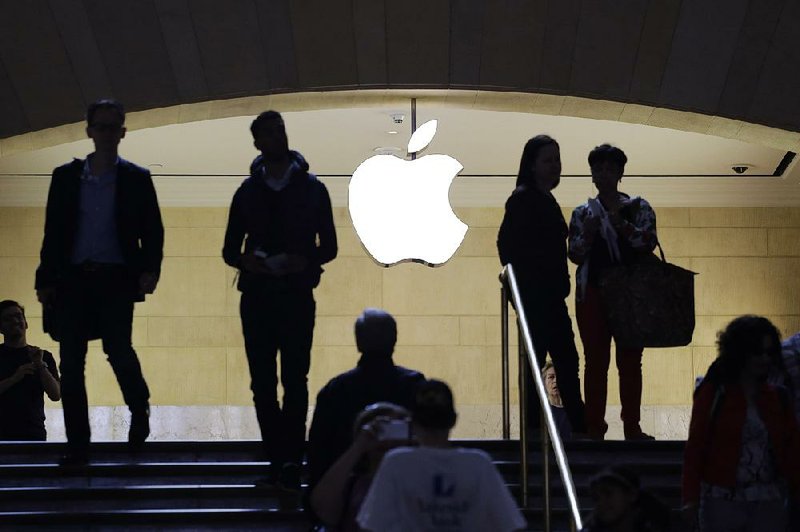WASHINGTON -- Consumer confidence rebounded slightly this month as the job market showed signs of improvement.
The Conference Board's consumer confidence index rose to 95.4 in May from 94.3 in April. Last month's reading had been a sharp drop from March's 101.4. A year ago, the index stood at 82.2.
Consumers' assessment of current economic conditions improved, but their outlook for the next six months slipped. Their expectations for the job market improved, however. Consumers were more likely this month to say they planned to buy a car, home or major appliance within the next six months.
"When I look at the confidence numbers, I'm seeing more strength than the current consumer spending numbers show," said Jim O'Sullivan, chief U.S. economist at High Frequency Economics in Valhalla, N.Y. "When you look at the backdrop for spending -- not just confidence but also income and wealth -- they're all suggesting there should be more spending."
Employers added a healthy 223,000 jobs last month, up from a lackluster 85,000 in March. And the unemployment rate slid to 5.4 percent, the lowest since May 2008, six months into the recession.
Paul Ashworth, chief U.S. economist at Capital Economics, called the May improvement in confidence "a pleasant surprise given that other measures of confidence had weakened in response to the recent surge in gasoline prices."
The University of Michigan's preliminary reading on May consumer sentiment, released May 15, dropped sharply. The university will issue a revised May number Friday.
Gasoline prices have jumped since hitting a low $2.03 a gallon in late January. The average price of a gallon of regular unleaded gasoline is $2.74, up from $2.53 a month ago. Still, gas prices are well below the average $3.66 a gallon a year ago, according to AAA.
"Consumer confidence, while it's not shaky and while I'm not trying to portray the U.S. economy is on shaky ground, it doesn't feel like the kind of economy that really has folks having a willingness to re-lever and have a lot more confidence than they've had recently," Mark Graf, chief financial officer at Discover Financial Services, said at a May 20 industry conference. "We just need to see a stronger economic backdrop that drives consumer confidence to really get the consumer having in a different fashion."
A second economic report Tuesday showed orders to U.S. factories for long-lasting manufactured goods fell slightly in April. But a category that reflects business investment climbed for a second month, a hopeful sign that this key sector is starting to revive.
Total orders for durable goods slipped 0.5 percent from March, when orders had surged 5.1 percent, the Commerce Department reported Tuesday. The big swing was driven by changes in commercial aircraft, an extremely volatile category that had jumped in March but fell in April.
Orders in the business investment category rose 1 percent in April after a 1.5 percent increase in March. The gains followed a sizable 5.1 percent fall in February. Business investment has been hurt by a stronger dollar sapping exports and cutbacks in the energy industry.
"The anticipated pickup in the growth rate of business investment in equipment in the second quarter appears to be firmly on track," Ashworth said.
He said the solid gain in orders for business investment indicated that the economy was starting to return to stronger growth after a severe winter in the Northeast at the beginning of the year and the West Coast port dispute, which disrupted supply chains.
Demand for commercial aircraft had surged 40.7 percent in March only to fall 4 percent in April. Orders for motor vehicles and parts rose a modest 0.3 percent last month. Orders for durable goods excluding transportation posted a 0.5 percent rise in the first back-to-back increase this year.
Orders for primary metals fell 2.1 percent in April, and orders for computers dropped 3.4 percent. But demand for machinery rose 3.1 percent.
U.S. factories have been struggling with weak exports, which have been clipped by a big rise in the value of the dollar. A stronger dollar makes U.S. exports more expensive in overseas markets. It also lowers the cost of imported goods, making them more attractive for American consumers.
Business investment has suffered because of large cutbacks in the energy industry, which has reduced exploration in response to the drop over the past year in global oil prices.
The overall economy, as measured by the gross domestic product, grew at a meager annual rate of 0.2 percent in the January-March quarter, according to the government's first estimate. That figure will be revised on Friday, and many economists believe it will show that GDP actually contracted in the first three months of the year.
But economists expect a rebound in the April-June quarter, with many expecting growth to recover to a rate of 2 percent or better.
Information for this article was contributed by Paul Wiseman and Martin Crutsinger of The Associated Press and Victoria Stilwell of Bloomberg News.
Business on 05/27/2015

